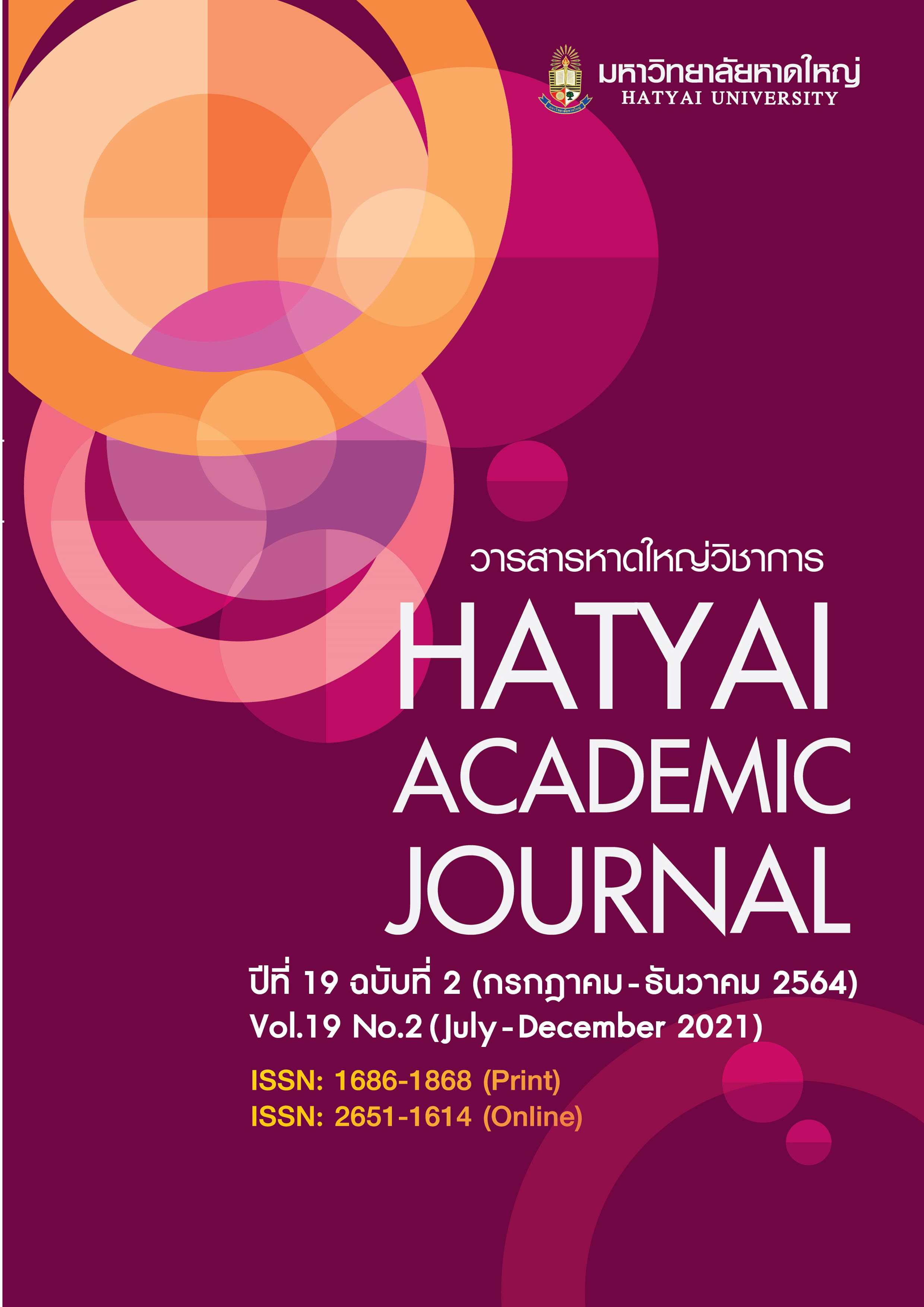Phuket: The Area of Creating a Chinese Identity
Main Article Content
Abstract
This article is part of research on Chinese art and culture in Phuket. It is a part of the study of the Phuket provincial area on the physical areas and their meanings to the first group of pioneers as well as the social space that is meaningful to the Chinese and various ethnic groups and the imaginary area of creating Chinese identity in Phuket. This is qualitative research using using studying amount of information, documents and various evidence, participation and non-participation observation as well as in-depth interviews with Chinese sages, including those involved in performing rituals in the Chinese shrines analyzed and presented in terms of descriptive research results.
The result of the research revealed that Phuket is rich in natural resources, located on the old shipping route in the Indian Ocean, known to sailors, attracting people to come to benefit and settle down until the original group somewhat retreated away. With the demand for tin ore various overseas Chinese people migrated and became laborers in the production process until it has become a city and society occupied by Hokkien Chinese people. Consequently, Chinese groups of people brought cultural traditions and rituals with their identity greatly expressed in the Chinese shrines, established their communities and passed on the beliefs to their Thai-Chinese descendants who greatly influenced subsequent generations. They developed and built additional shrines, continued traditions and the rituals that are common in the shrines today through the great making of Phuket as an imaginary area, showing such a Chinese identity that it has become a cultural capital of tourism well-known to the world over.
Article Details
All published articles are evaluated by three qualified peer reviewers from various institutions through a double-blind process, where reviewers do not know the authors’ identities and authors do not know the reviewers’ identities. The content and articles in the Hatyai Academic Journal reflect the authors’ views only and are neither the opinions of the editorial board nor the responsibility of Hatyai University. The Editorial Board of the Hatyai Academic Journal allows articles to be reproduced for academic purposes, on the condition that the original source is clearly cited.
References
Chantavanich, S. (2014). Sociological theory (8th ed.). Bangkok: Chulalongkorn University. [in Thai]
Chinakarn, P. (2005). Thalang, Phuket and Phuket. Bangkok: O.N.G. [in Thai]
Chuenpimonch, S. (2017, 11 October). Phuket’s cultural philosopher in Phuket director, Chui Tui Tao Bo Keng foundation and former ritual practitioner (huad gua) in the vegetarian festival of jui dtui shrine. (interview). [in Thai]
Department of Mineral Resources Ministry of Natural Resources and Environment. (2013). District classification for management in geology and mineral resources Phuket province. Retrieved from http://www.dmr.go.th [in Thai]
Feungfusakul, A. (2000). Areas in social science theory. Journal of Social Sciences Faculty of Social Sciences Chiang Mai University, 2(12), 65-101. [in Thai]
Fine Arts Department. (1989). Thalang, Phuket andaman coastline: Archeology ethnic and economic history. Bangkok: Fine Arts Department. [in Thai]
Kaentakhian, S. (n.d.). History of Phuket town. Phetchaburi: Phetchaburi Teachers’ College. [in Thai]
Lefebvre, H. (1991). The production of space. Malden, Massachusetts: Blackwell.
Limpakornkul, T. (2018, 6 August). Chinese cultural guru in Phuket vice president of Sam Sian Tian Hua Kung shrine. (interview). [in Thai]
Manujuntharat, S. (2017, 11 October). Phuket’s cultural philosopher in Phuket director, Chui Tui Tao Bo Keng foundation and former ritual practitioner (huad gua) in the vegetarian festival of jui dtui shrine. (interview). [in Thai]
Phunwong, T. (2013). History of Phuket town. Bangkok: Odeon Store. [in Thai]
Pinbuddhasil, S. (2017, 10 August). Cultural scholar and the history of Phuket. (interview). [in Thai]
Pinpradab, C. (2017, 10 June). Chinese cultural philosopher in Phuket province. (interview). [in Thai]
Pumpkinphon, P. (2017, 18 October). Chinese culture philosopher in Phuket province president of the shrine club in Phuket. (interview). [in Thai]
Rajapantharaksa, S. (1985). Thao thep krasattri. Khon Kaen: Siriphan Offset. [in Thai]
Suwajaraphinan, S. (2015). Architecture theory: Public space and social space. Chiang Mai: Chiang Mai University. [in Thai]

